Both asset tracking and asset management play crucial roles in any business’s operations, there’s no doubt about that.
Although these terms are often used interchangeably, there is a difference between the two.
In this article, we will explore these differences in detail and analyze how you can benefit from both asset tracking and asset management.
After all, having control of your assets is crucial when it comes to reaching peak efficiency.
In this article...
What Is Asset Tracking
The first step in gaining that control is asset tracking. In the simplest of terms, asset tracking tells you what types of assets you have, how many there are, and where they are.
It primarily entails keeping track of your assets’ locations.
However, asset tracking is not a new concept by any means. It’s been around for thousands of years. It’s how we do it that’s changed.
For a long time, asset tracking was done manually, meaning employees had to manually update the quantities and whereabouts of each asset every time there was a change in the inventory.
Alternatively, they would need to do a physical inventory count every so often to determine what’s on hand.
This was done using pen and paper, and later, with the emergence of spreadsheets, the process became a bit more sophisticated.
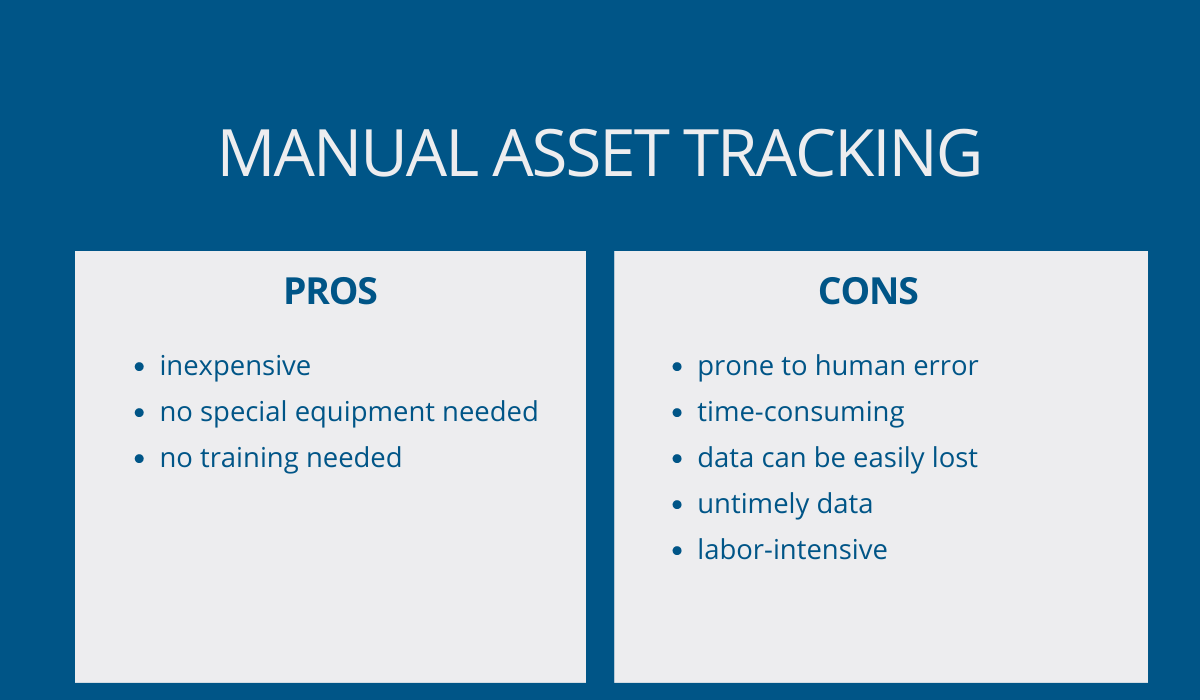
Although inexpensive and easy to master, manual asset tracking is inefficient and prone to human error.
It typically results in too many costly mistakes, such as ghost assets or duplicate assets, just to name a few.
As an answer to problems stemming from these inefficiencies and mistakes, automated asset tracking solutions emerged.
Asset tracking software in combination with different tracking methods such as QR codes, Bluetooth Low Energy (BLE), Radio Frequency Identification (RFID), or Global Positioning System (GPS) makes it possible to track assets in real time, without (or with very little) human intervention.
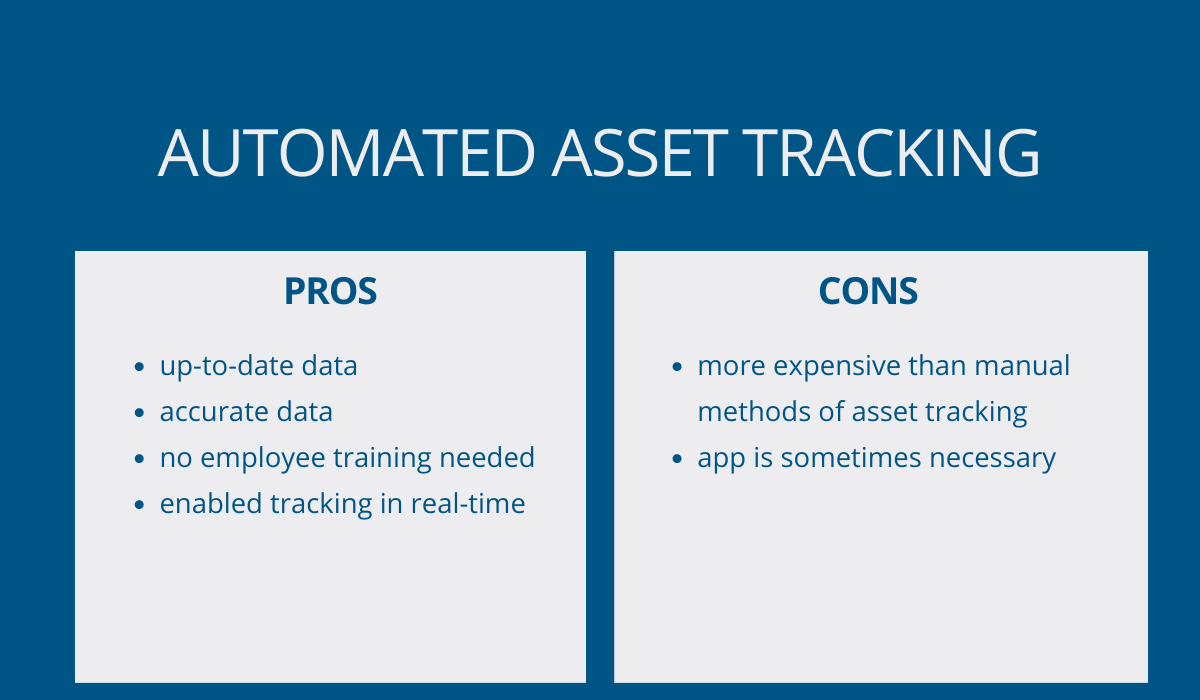
This more modern asset tracking solution provides productive data that is always up-to-date and accurate.
But why exactly is that important? The picture below provides an answer.

For starters, effective asset tracking saves you time and money.
With reliable asset tracking software, workers always know where their tools are at all times and therefore don’t waste time looking for them.
At the same time, you don’t have to waste money replacing the tool you actually have somewhere – it just happens that no one knows where it is at the moment.
Yes, asset tracking prevents asset loss, but it also reduces asset theft. It provides complete visibility of your assets and, in turn, ensures their security.
Some asset tracking solutions even notify you if an asset is removed from within a specified range.
Moreover, efficient asset tracking comes along with increased accuracy, which in turn makes for more streamlined audits.
In fact, asset tracking makes your operations more streamlined in general.
All in all, accurate asset data makes everyone’s day-to-day more manageable as it facilitates a smooth workflow.
In other words, instead of pausing work to look for misplaced equipment or trying to figure out why there’s an unnecessary surplus of materials, you and your team can focus on actual productive work.
This is why asset tracking is so essential, especially in the construction industry.
What Is Asset Management
However, as important as asset tracking is, it is just one small part of the whole that is asset control.
This is where the mixup between asset tracking and asset management stems from.
Asset management is a much broader term, and it encompasses asset tracking, along with asset acquisition, utilization, maintenance, disposal, and so on.
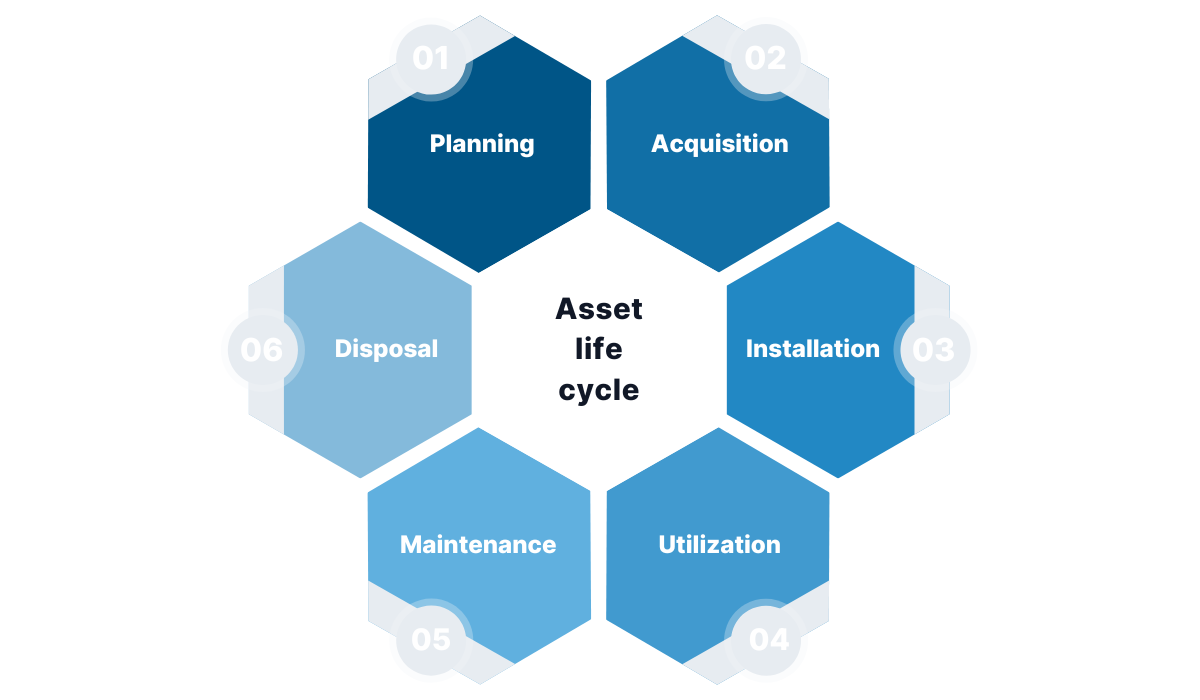
In other words, asset management follows assets’ whole life cycle, the goal being to ensure your assets are utilized as efficiently and cost-effectively as possible.
In construction, proper asset management would mean making sure there are just enough tools, equipment, and construction materials to finish each project on time, with minimal unplanned downtime and unexpected costs, and without sudden tool or equipment failure.
Effective asset management relies heavily on collecting and tracking different asset data to make the best-informed decisions possible.
This is where asset management software comes into play. It makes data acquisition automated, highly accurate, and up-to-date.
Data such as asset check-in and check-out times, utilization rates, downtime, and maintenance reports all contribute to efficient asset management.
Based on that data, decision-makers can more accurately plan future projects and estimate their completion dates, efficiently allocate assets across job sites, ensure assets are properly maintained, and stay on top of inventory needs.
For example, when reviewing your equipment utilization data, you may come to find out that one of your excavators is underutilized or, in other words, remains idle for most of the time at a job site.
You may also realize that there’s an overutilized excavator on another job site, causing significant project delays because it simply cannot do all the work on its own.
With proper asset management, you get all that information in real time, meaning you can make an instant and informed decision to move the underutilized excavator from the first job site to the second one, where it’ll be of more use and reduce the workload of the overutilized excavator.
Plus, with asset management software, you can do all of this remotely without driving back and forth from site to site or making numerous phone calls just to get an insight into the situation.
As you can see, effective asset management has many short-term and long-term benefits, and as such, it’s definitely something you should implement.

At its core, asset management means taking good care of the assets you have. That involves being on top of maintenance needs as well as preventing asset loss and theft.
Therefore, if you do this correctly, you’ll extend the lifespan of your assets and see a decrease in unplanned downtime.
As a matter of fact, asset management triggers an avalanche of improvements to your operations, such as increased employee safety, ensured compliance with industry standards, timely project completion, and, naturally, increased profits.
Overall, asset management is often overlooked because of the perception that its time-consuming and without any real benefits.
The truth is, this is a very important process – one that can save you a lot of time and money. And with modern asset management solutions, it doesn’t have to be complicated at all.
Asset Tracking vs Asset Management: Key Differences
The fact that these two terms are often mixed up comes as no surprise. Asset tracking is, after all, an integral part of asset management.
However, there’s a difference between the two.
Asset management includes many different elements across different stages of an asset’s life cycle, while asset tracking refers to asset location tracking, which is one small aspect of asset management.
Asset tracking and asset management are not the same thing, yes, but they do share some similarities.
Both of them have a vast impact on your operational efficiency, productivity, and profitability.
In short, you need them both if you aim to stay ahead of the game.
In fact, not only do you need both, you need to make sure you’re doing them as efficiently as possible. And the key to efficiency is automation.
Our own solution – GoCodes – takes care of both your asset tracking and asset management needs, and it does so effectively while remaining user-friendly, even for less tech-savvy users.
Here’s how it works.
First, you would need to attach our customized, durable QR code tags to the assets you want to track.
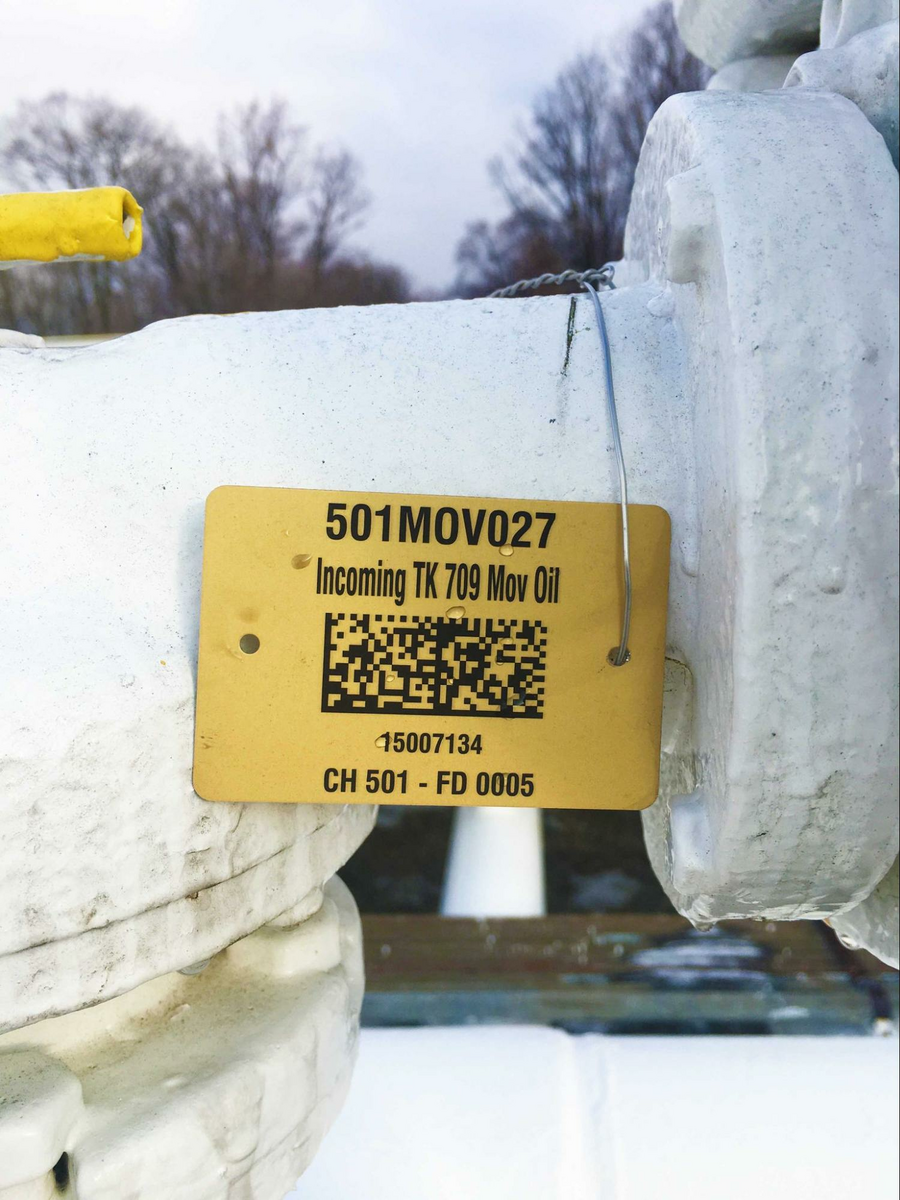
Then, with our app, you would scan the QR code to access or update asset data on the go.
You and your team can check assets in or out, track their locations, schedule maintenance, perform asset audits, and more.
You could also supplement your arsenal with our Bluetooth beacons which transmit asset information to nearby Bluetooth compatible devices, like smartphones, without needing to be scanned.
Read more about them here.
Our software also has features that make sure you’re always on top of asset tracking and management.
For instance, to keep up with your inventory needs, GoCodes sends you low inventory notifications, and when maintenance is due, the software sends a reminder for scheduled service.
Moreover, with our Enterprise Reporting module, GoCodes empowers you to design your own custom reports.
For example, you can design a report that automatically flags assets that are due for inspection or maintenance.
Essentially, these reports provide you with a solid basis for all your decision-making.
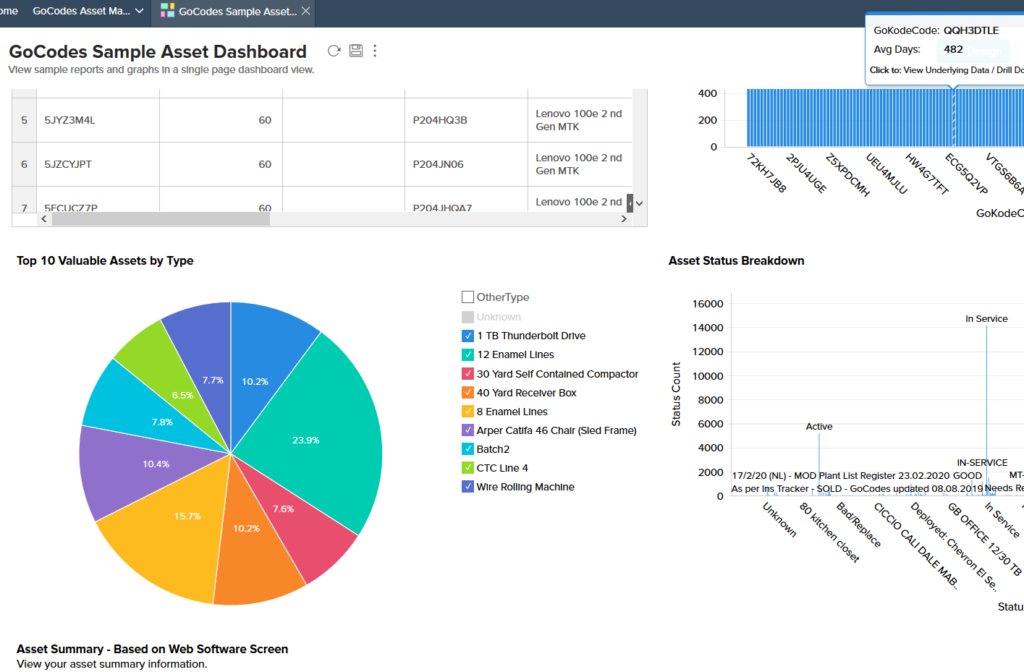
All in all, investing in the right software solution that has it all is the way to go if you’re looking to optimize both your asset tracking and asset management.
Conclusion
To sum up, there’s a clear distinction between asset tracking and asset management.
The former entails asset location tracking, while the latter refers to what you do with your assets once you have all the crucial data you need to make informed decisions.
Still, no matter how different, they do go hand in hand.
And together, efficient asset tracking and management help propel your businesses forward by ensuring maximum productivity and profitability.



